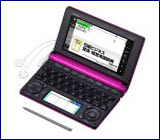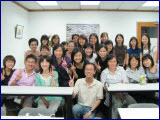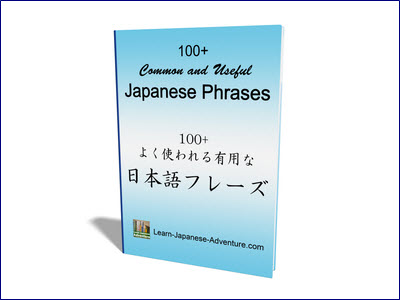- Home
- Learn Japanese Language FAQ
- How can you tell when words end and begin in a Japanese sentence?
How can you tell when words end and begin in a Japanese sentence?
by Anonymous

How can you tell when Words end and begin in a Japanese Sentence?
When looking at a sentence consisting of Japanese characters, how can you tell when words end and begin? In English each word is separated, while in Japanese they all run together.
Usually I can't tell if the character I'm reading is at the beginning, middle or end of a word. I've tried finding solutions that can help but haven't been successful.
Reply:
Hi, there are mainly 3 types of characters in Japanese, hiragana, katakana and kanji, excluding romaji which is the roman characters used to help foreigners for pronunciation.
A Japanese word can be made up of hiragana, katakana, kanji, or a combination of kanji and hiragana. For example, this Japanese word 飲む (nomu), which mean "to drink", is made up of a kanji 飲 (no) and a hiragana character む (mu).
On the other hand, the kanji 飲 (no) can also be represented by the hiragana character の (no), which is the pronunciation of the kanji 飲 in hiragana. So you can also use のむ (nomu) to represent "to drink".
As such, it's possible to write the whole sentence consisting of only hiragana characters. However, this will make the sentence difficult to read because many kanji are pronounced with not only one but few hiragana characters.
Japanese words can also be formed with katakana, which are mainly used to express foreign words, foreign places, foreign countries,
In order to know how Japanese words are formed, you need to have a basic understanding of the above 3 Japanese characters. You can go to the following pages to find out more on each character...
1. Japanese Hiragana
2. Japanese Katakana
3. Japanese Kanji
You may also want to refer to this page where there are many Japanese words and vocabulary available. You can then see how different combinations of Japanese words are formed.
I am not very sure why you cannot tell when words end and begin in a sentence consisting of Japanese characters. If you understand how Japanese words are formed (as explained above), you shouldn't have any problem with that.
The only problem I can guess is that you may be confused about kanji, because a kanji can be formed with few kanji. For example this kanji 飲 (no) is made up of 2 kanji 食 and 欠. While kanji are more complicated as compared to hiragana and katakana, the theory is the same behind how Japanese words are formed.
I hope I have not confused you further in my explanation. Let me you if you need more help. Or you can give some examples to show your problem.
Hope this helps,
Kia Leng
Comments for How can you tell when words end and begin in a Japanese sentence?
|
||
|
||
|
||
|
||
|
||
|
||
|
||
|
||
|
||
|
||
|
||
|
||
|
||
|
||
|
||
|
||
|
||
|
||
|
||
|
||







